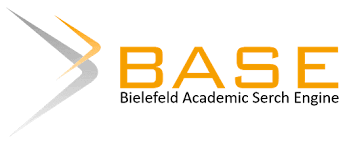MENGEMBANGKAN PEMBELAJARAN DIGITALISASI DI ERA SOCIETY 5.0
Keywords:
instructional media, WhatsApp application, media edpuzzleAbstract
In using digitalized learning media in the era of society 5.0, society 5.0 in the world of education can be interpreted as a human-centered and technology-based learning concept. Educators have autonomy in choosing learning strategies to create active learning. The involvement of teachers and students in the learning process by exploring, discovering, discussing, critical thinking, and innovation in the use of technology. One good and effective solution is to use the whatsapp application and also eduppazle-based media. The purpose of this article is to explain the role of using the whatsapp application and also edpuzzle media in developing learning later that can be used by teachers in the learning process in the classroom so that learning is more fun. The writing of this article uses the literature study method by reviewing journals related to the whatsapp application and also the edpuzzle media. The results of this study are the use of WhatsApp applications and also edpuzzle-based media that can be applied in the world of education and can produce students who actively explore, discuss, think critically, and innovate.
Downloads
References
Budiman Arif. (2019). Kolom pakar: Industri 4.0 vs Society 5.0. https://ft.ugm.ac.id/kolom -pakarindustri-4-0-vs-society-5-0/
Burton, J. M. (2009). Creative Intelligence, Creative Practice: Lowenfeld Redux. Studies in
Art Education, 50(4), 323-337. https://doi.org/10.1080/00393541.2009.11518779
da Ary, D. (2019). Pacitanian Art-Edu (Jalan Alternatif Menuju Hakekat Tujuan Pendidikan Seni di Indonesia). MUDRA Jurnal Seni Budaya, 34(2), 177-185. https://jurnal.isidps.ac.id/index.php/mudra/article/view/699
Creation Representation in Present Time. Harmonia: Journal of Arts Research and Education, 16(2), 143. https://doi.org/10.15294/harmon ia.v16i2.6146
Richmond, S. (2009). Art’s Educational Value. The Journal of Aesthetic Education, 43(1), 92–105. https://doi.org/https://doi.org/10.1353/jae.0.0031
Sugiarto, E., Rohidi, T. R., & Kartika, D. S. (2017). The Art Education Construction of Woven Craft Society in Kudus Regency. Harmonia: Journal of Arts Research and Education, 17(1), 87–95. https://doi.org/10.15294/harmonia.v17i1.8837
I Kadek Yogi Mayudana, I. K. S. (2020). Analisis Kebijakan Penyederhanaan RPP (Surat Edaran Menteri Pendidikan Dan Kebudayaan Nomor 14 Tahun 2019). IJED (Indonesian Journal of Educational Development), 1(1), 62–70. https://doi.org/10.5281/zenodo.3760682
I Komang Sukendra, I Made Darmada, P. D. F. (2019). Pengembangan Model Pembelajaran Berbasis ICT (Information Communication and Technology) Pada Revolusi Industri 4.0. Prosiding ICT IKIP Saraswati Tabanan, 7
I Komang Sukendra, P. D. F. (2021). Peningkatan Kualitas SDM Guru Melalui Pengembangan Pendidikan Menuju Era Society 5.0 (pp. 118–128). https://drive.google.com/file/d/1WiQoFgQQFplMbou3ZVtNqb45oO2YYyRN/view?usp=sharing
Richmond, S. (2009). Art’s Educational Value. The Journal of Aesthetic Education, 43(1), 92–105. https://doi.org/https://doi.org/10.1353/jae.0.0031
Rumi, J. (2018). Cross Culture Fertilization sebagai Basis Pengejawantahan Kesenian dalam Pendidikan. Tonika: Jurnal Pengkajian Dan Penelitian Seni, 1(1), 27-39. http://journal.sttabdiel.ac.id/tonika/article/view/9
Rumi, J (2019). Daya-Cipta Pembelajaran Kesenian Tradisional Sebagai Pembina Inteligensi Dan Imajinasi Anak-Didik: Ekspresi Artistik Dan Kreasi Estetik, 15- 18
Gunara, S. (2017). Local Knowledge System in Music Education Culture at Indigenous Community Kampung Naga Tasikmalaya Regency. Harmonia: Journal of Arts Research and Education, 17(1), 48. https://doi.org/10.15294/harmonia.v17i1.8773
Sukendra, I. K. (2018). Hubungan Antara Tingkat Kecemasan dan Kemampuan Berpikir Logis Terhadap Hasil Belajar Matematika. Emasains:Jurnal Edukasi MAtematika Dan Sains, VII(1), 91–98.
Sukendra, I. K., Suharta, I. G. P., Ardana, I. M., & Ariawan, P. W. (2022). The Mechanism Development of Digital Mathematics Material Study Based on STEM. 7(2), 4098–4104. https://kalaharijournals.com/resources/FebV7_I2_495.pdf
Downloads
Published
How to Cite
Issue
Section
License
Copyright (c) 2022 LP3M Universitas PGRI Mahadewa Indonesia

This work is licensed under a Creative Commons Attribution-NonCommercial-ShareAlike 4.0 International License.
Hak cipta mencakup hak eksklusif untuk mereproduksi dan mengirimkan artikel ini dalam semua bentuk dan media, termasuk mencetak ulang, memotret, mikrofilm dan reproduksi serupa lainnya, serta terjemahannya. Reproduksi dari bagian manapun dari jurnal ini, penyimpanannya di database dan transmisinya dengan bentuk atau media apa pun, seperti salinan elektronik, elektrostatik dan mekanis, fotokopi, rekaman, media magnetik, dan lain-lain, akan diizinkan hanya dengan izin tertulis dari penerbit jurnal.







1_(1).jpg)











